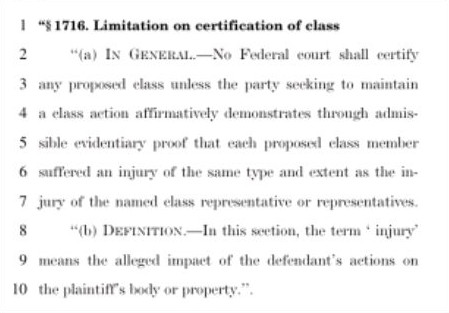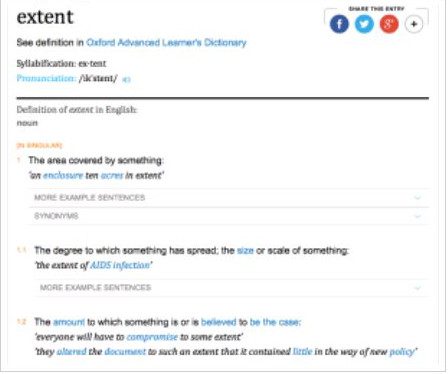Since HR 1927 was introduced, there has been an outcry that it will "kill the class action." In fact, opponents (among them Professors Alexandra Lahav, Samuel Issacharoff (Issacharoff HR1927 Letter), and Arthur Miller (Miller HR1927 Letter)) have complained that it was specifically designed to do so. Nothing could be further from the truth. In fact, the bill was specifically designed to have a minimal impact on Rule 23. So how did the disconnect between the intent and the reaction occur? I thought it would be worth walking through the criticisms of the bill so far, and what is actually going on.
No more civil rights class actions. Critics have misread the bill's provision to ban any injury that is not to person or property. The language is

The criticism is that this would ban any injury that doesn't fall into these narrow categories. If this criticism were accurate, I'd oppose the bill myself. But it's not. It's based on a misreading. The definition of "injury" in this case is only for the purposes of determining when a court must make the inquiry and whether proof is required. If a type of injury was not specified, the bill doesn't affect it. So civil rights class actions (like Brown v. Board of Education), or statutory damages class actions (like those arising under FCRA) are not affected by the bill. (Expressio unius est exclusio alterius.) It is possible that the current language is more ambiguous than I think, in which case Congress can fix it. And if they don't, it is also within a court's powers to give the statute its intended, more restrictive meaning.
The bill requires identical injuries. According to the critics, if one class member is injured in the amount of $2, and another for $3, then one cannot certify a class. This is an overly restrictive reading of "type and extent."

Extent does not mean "exact quantity." It means "general amount." If I'm wrong, and this is a genuine issue, this is another place where a simple language change would solve the problem the critics have identified. Perhaps to "scope" or "scale."
It will require full-blown trials before certification. The language in the bill is "proof by admissible evidence." This was drafted to track the language of various recent Supreme Court cases. So HR 1927 no more requires a full-blown trial on the merits than the Supreme Court has. Even if this were new, it's aimed at a narrow issue: whether the injury suffered by the named plaintiffs matches the injury suffered by the class. "Admissible evidence" includes documents produced by the defendant, affidavits, deposition testimony, and expert testimony—all evidence already offered in a rigorous certification inquiry.
It's a class-action killer. I've been over this criticism many, many times. The PSLRA did not kill the securities class action. CAFA did not kill the class action. Wal-Mart Stores, Inc. v. Dukes didn't kill it. Nor did Comcast Corp. v. Behrend. (In fact, Comcast inspired judicial retrenchment.)
I know Congress is polarized. And I know that means any bill generated by one side will inspire knee-jerk suspicion from the other side. But it is still possible to have an honest, rigorous debate about these issues. H.R. 1927 was designed to take care of the kind of situation found in Whirlpool and Pella. If plaintiffs' lawyers find those cases acceptable, they can defend then. But the same old rhetoric about how any proposed reform will kill the class action is tired and inaccurate.
We're all better than that, aren't we?
The content of this article is intended to provide a general guide to the subject matter. Specialist advice should be sought about your specific circumstances.
